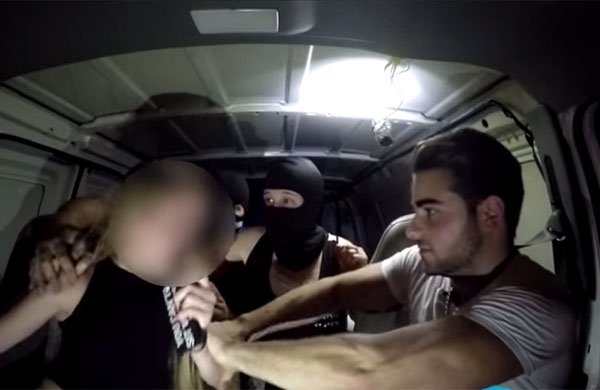 Many of us know the feeling of being the last one picked for a team. Most of us know the feeling of failure or feeling like a square peg in a round hole. Many of us still recall the first hurtful thing that happened to us when we were young that still smarts today. I know I do.
Many of us know the feeling of being the last one picked for a team. Most of us know the feeling of failure or feeling like a square peg in a round hole. Many of us still recall the first hurtful thing that happened to us when we were young that still smarts today. I know I do.
Luckily, as children we were resilient, and with time, maturity, love and external encouragement, most of us were able to work through those tough times and actually become stronger as a result.
Now, imagine feeling abject inadequacy, low self-confidence, despair and isolation—imagine living with these feelings every day of your life—when you’re 6-years-old, 8 and then 10 and not having the cognitive ability or the capacity to deal with them on your own, and you may never. For all intents and purposes, this is the life of a child with special challenges. Or more accurately, the feelings of our specially challenged child. We say “our” because we have a responsibility to help each and every child in this community as if he were our own.
This is why we need SEAD (Special Ed Academy of Deal). SEAD saves lives. SEAD is an institution like no other; a school that sets goals for children and won’t give up until they’re met, and then surpassed; a school that doesn’t only believe our children can do well, but perseveres until they do; a place that sets the bar high and encourages our children to climb toward it.
SEAD students typically exceed parents’, doctors’ and therapists’ expectations of them, because the staff at SEAD believes in them—sometimes even more than we do! Just ask the many community children whose lives and futures have been secured by all that SEAD has to offer, including the exemplary teachers, their experience and dedication.
We all know someone who has been affected in some way by the challenges of dealing with a child with specific needs that are not being met in a mainstream class. However, if you don’t know anyone going through it, imagine this: You have to explain to a 6-year -old that he can’t have a birthday party because he has no one to invite. You have to figure out what to tell your 9-year-old when she asks “Why am I the only one in my class who has a hard time reading?” There is no pain greater than seeing your child struggle over a seemingly minor issue that has become an impossible challenge. These situations are not hypothetical. They are real, and they are happening right now to someone you know.
Let’s face it: everyone knows what to do with the good stuff! It’s easy when your child wins awards, reaches milestones, laughs, and has fun. Every cell in your body sings and your genes congratulate themselves when your kid hits a home run. The real test of parenting is the tough stuff. Parents of children with more complicated needs sometimes fail this test miserably.
For example, I know parents who avoided parent-teacher conferences due to the fear of reports they didn’t want to hear. I know a mother who ignored her child’s needs because she didn’t know how to deal with them. I have seen families suffer needlessly because of the frustrations and arguments that resulted from unsolved challenges of one child, and out of frustration a parent said things to the child that he did not mean. I know a parent who saw little hope of success for the future of her child; she only saw dead ends and failure. All of these are real stories from real parents who, not knowing where to turn, grasped onto SEAD as a lifeline, and it has literally turned their lives around.
SEAD is an institution like no other. It can take the child whose future appears bleak and turn it into one full of limitless opportunities. Now, I could probably go into the different modalities utilized at SEAD, the wide range of disabilities they work with, the outstanding curriculum, or the services and accommodations they offer, but to the uninitiated it might sound tedious.
There is, however, a more direct way to illustrate my point. To put it simply, people in our community are suffering. Families with children who are struggling are desperate—rules are broken, promises are broken. They are broken. And many of these families have been repaired by the dedication and selflessness of the people at SEAD. To call these remarkable people “employees” would be a denigration. They are an integral part of the lives of these families. Put simply, for many of these children, without SEAD there would be no hope.
SEAD is here to save our kids and help them succeed. The school expects nothing in return. They have no agenda other than to see our children succeed. And they do; everyday. And with your support, SEAD can continue to help our kids, not just to succeed, but to rise and soar.
Who Needs Individualized Education?
Most students can learn as part of a large class. Some students are very bright and capable, yet need to be taught in a slightly different way in order to maximize their potential. These students benefit from individualized education, tailor made to help them succeed.
What Is Individualized Education?
An individualized education is designed by analyzing a child’s strengths and weaknesses, and creating a method for each to be addressed or maximized.
How Do I Know If My Child Needs Individualized Education?
Any child who is struggling with a generalized education can soar when his/her individual needs are met. No child should go through school disappointed.
I Am Scared My Child Will Be Labeled If I Send HimHer To An Individualized Ed School.
Children whose challenges are addressed when they are young usually move on to succeed, allowing those around them to forget the help they needed when they were younger. Unfortunately, children who don’t get the help they need continue to struggle, thereby creating a label of failure for themselves.
Can My Child Go Back To A Regular School After Being In An Individualized Ed School?
The goal for most children in a specialized program is to use the new skills they acquired to integrate back into mainstream classes. Mainstream schools constantly comment that the students who received an individualized start end up reaching and often surpassing their classmates.
_______________
Judi and Mark Chalme are community members and advocates for special needs children. Mark is president of Digital Vision Media Productions and Judi is a talk show host.



